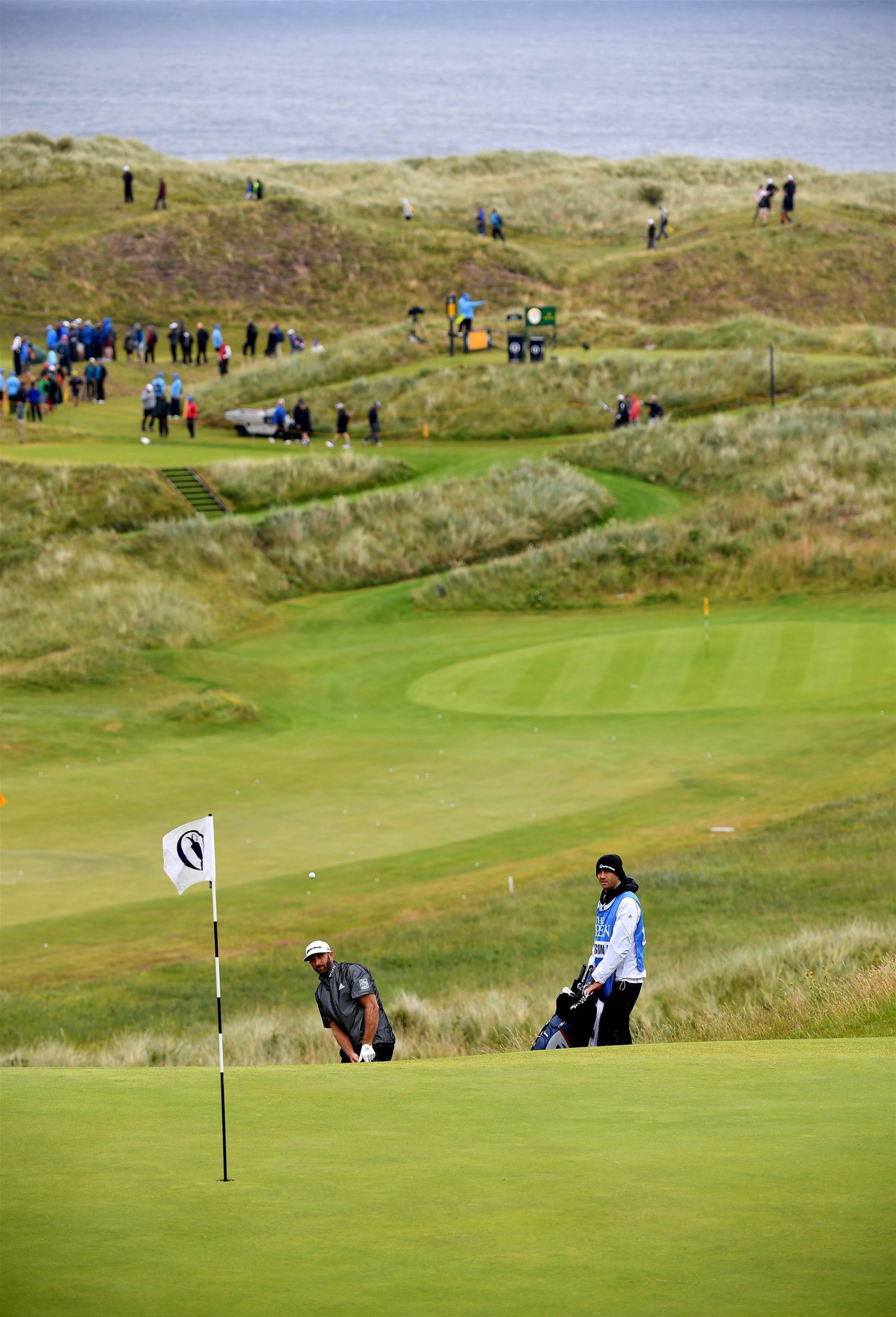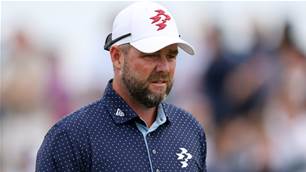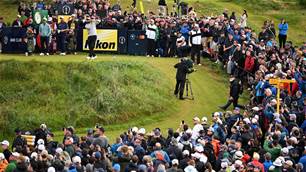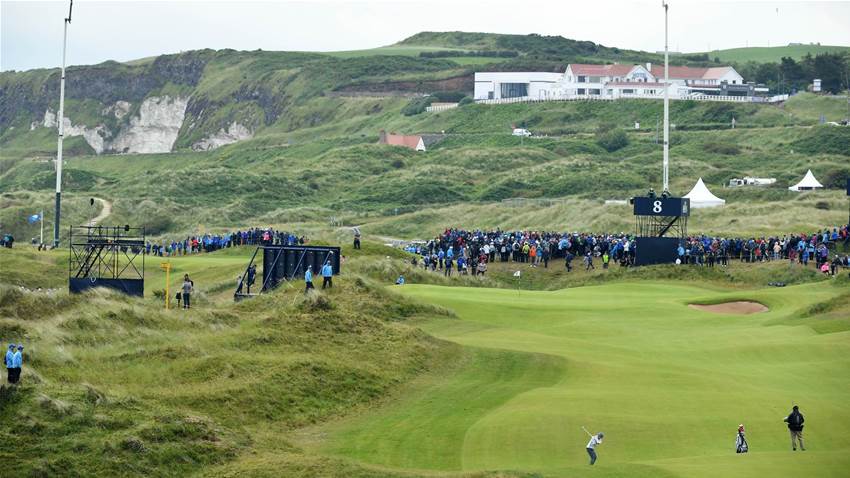Exactly 1,367 days after the formal announcement was made to the world on October 20 2015, the Open Championship is finally returning to Royal Portrush in Northern Ireland.
When local member Darren Clarke - “Champion Golfer of the Year” in 2011 – drives off the first tee on the Dunluce Links at 6.35am July 20 2019, it will be the first shot struck outside Scotland or England in golf’s oldest and most important championship since 1951.
Sixty-eight years ago, Max Faulkner lifted the Claret Jug skyward, after his 72-hole aggregate of 285 – one-over par – left the eccentric and brightly-clad Englishman two-shots clear of runner-up Tony Cerda of Argentina. A young Australian by the name of Peter Thomson made the first of what would eventually be 30 Open appearances that year too, finishing T-6, eight shots behind the eventual champion.
That year, the course measured 6,802-yards. This year it will be 542-yards longer. Which is probably just as well in this era of ever-longer drives, ever-bigger drivers and ever-lower scores.
Still, amidst a plethora of praise for a Royal Portrush course long recognised as one of the world’s finest links, a preponderance of realism mixed with a dash of fatalism has been emanating from various members of the 156-strong field.
 “The biggest thing is you have to be hitting the ball well,” says Victorian Marc Leishman, neatly summing up the prevailing mood. “You can’t pretend around here. Especially if the weather is rough. The rough is brutal. Most courses have a side you can miss on, but not this one.
“The biggest thing is you have to be hitting the ball well,” says Victorian Marc Leishman, neatly summing up the prevailing mood. “You can’t pretend around here. Especially if the weather is rough. The rough is brutal. Most courses have a side you can miss on, but not this one.
RIGHT: Ball control as well as pure length are going to be pre-requisites of victory at Royal Portrush. PHOTO: Stuart Franklin/Getty Images.
"Here, you just can’t miss anywhere. So driving is key, as are the shots around the greens. Links normally have really severe bunkers. But here there are lots of run-offs. So you have a lot of options. I’ll be hitting a lot of bump-and-runs, a lot of 5-iron chips. But you can do what you want – lob wedge, hybrid or putter work too.”
All of which sounds promising for at least the higher-profile members of the six-strong Aussie contingent. Both Adam Scott and Jason Day will no doubt be joining Leishman in relishing the prospect of a challenge where the emphasis will be on the longer clubs in the bag. With so much heavy rain over the immediately preceding days, the course will be softer and longer than what one might expect at this time of year, although the fairways will play wider as a consequence.
Not that such a bonus will make things too easy. Only easier. With a breeze blowing, Leishman’s assessment will hold true.
“The big key this week is just to stay out of the fairway bunkers and keep out of the rough,” says World No.3 Rory McIlroy. “Even if you're giving yourself a little longer second shots in. You can play this golf course from the fairway. On the other hand, with the way the rough has grown over the past couple of weeks, you're not going to be able to score hitting it off line.”
Very true. But there is more to it than just that. Strategy as well as strength is required.
“One of the great things about this golf course – and I sort of realised this last Saturday when I came to play – is that, off the tee, it makes you challenge at least one bunker,” continues McIlroy. “If you try to take all the bunkers out of play, it's going to be very difficult. You're leaving yourself a lot of long shots. So, on a lot of tee shots, you challenge one bunker but stay short of the next one. You have a little area to hit it into. Which really makes you play; you really have to concentrate on every tee shot.”
“You can’t pretend around here. Especially if the weather is rough. The rough is brutal. Most courses have a side you can miss on, but not this one. Here, you just can’t miss anywhere.” – Marc Leishman
Indeed, while nothing is impossible, it would come as something of a surprise if Sunday’s winner does not come from the elite group atop the world-rankings. Ball control as well as pure length are going to be pre-requisites of victory, a fact confirmed by swing coach Denis Pugh, who works with defending champion Francesco Molinari.
“In crosswinds the targets will get very small,” points out Pugh. “So you have to allow for the wind. (three-time Open champion) Nick Faldo was great at that in his pomp. He would ‘slide’ the ball into the fairways using the wind. Then he would hold the ball up into the wind with his approach shots. He could do that both ways too.
“Take the tee-shot at the (432-yard, par-4) 9th. In a right-to-left wind the correct line means you have to fly the ball over some horrendous trouble. If you hit it there you are playing three off the tee. In left-to-right wind it is hard to aim far enough left to allow for that breeze. And if you do hit a straight one you are headed back to the tee again.”
As ever though, much will depend on the direction and velocity of the breezes that blow almost constantly on Northern Ireland’s windswept north coast. Like every seaside course, Royal Portrush has many faces, ranging from benign to hostile. On Tuesday, Englishman Tommy Fleetwood drove the green on the 408-yard 17th. One day later he needed a 7-iron to reach the same putting surface after a good tee-shot. Ah, links golf. There’s nothing like it. And nothing better.
Related Articles

Leishman a long shot with plenty more to play for

Tee Times: 2025 Open Championship Third Round (AEST)













